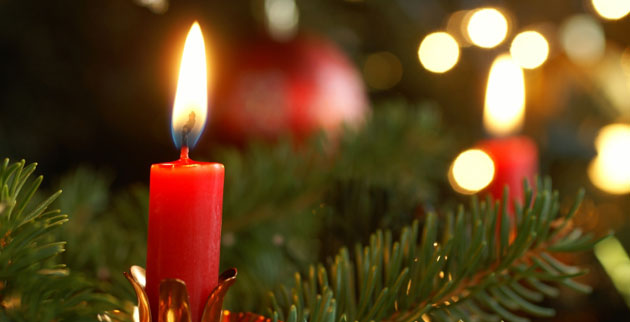
The “most wonderful time of the year” is also one of the busiest for the Vanderbilt Regional Burn Center. As the holidays approach, doctors at Vanderbilt University Medical Center urge people to exercise caution and eliminate potential dangers that could lead to burn injuries. “We see a significant increase in burn patients between Thanksgiving and Christmas,” said Jeff Guy, director of the Burn Center. “Your holiday, which should be full of joy and celebration, can quickly turn tragic.” Guy says many of these injuries are easily preventable and offers these tips for a safe holiday season: Holiday Cooking Cooking fires are more prevalent during the holidays, causing an increased number of burn injuries on Thanksgiving, Christmas Eve and Christmas Day, Guy said.
- Stay in the kitchen when cooking. Simply being more attentive can prevent most cooking fires.
- Keep anything that can catch fire, such as potholders, wooden utensils, towels or food packaging, away from the stovetop.
- Deep-fried turkeys have become increasingly popular, but extreme caution should be exercised when choosing this cooking method. Turkey fryers should be used outdoors and kept a safe distance from buildings. Never leave unattended, and do not overfill the fryer with oil.
“O Christmas Tree”
- Each year, Christmas trees are involved in hundreds of fires. According to the U.S. Fire Administration, Christmas tree fires are not common but are likely to be serious, resulting in deaths, injuries and property loss and damage.
- When purchasing an artificial tree, look for a “fire resistant” label.
- Check for freshness when purchasing a live tree. A fresh tree is green, the needles are hard to pull, the trunk should be sticky with resin, and when hit, the tree should not lose many needles.
- Heated rooms will dry live trees quickly, so keep the stand filled with water. A well-watered tree is usually safe, but dry trees can be ablaze in seconds.
- Place trees away from fireplaces and radiators.
Lights
- Nothing brightens the holidays better than strings of lights, but this sparkly tradition can be dangerous if certain precautions are not followed.
- Check new and old sets of lights for broken or cracked sockets, frayed wires or loose connections, and discard damaged sets.
- Do not overload extension cords.
- Never use electric lights on a metallic tree.
Other holiday reminders:
- Do not burn wrapping paper in the fireplace, as it can ignite suddenly and burn intensely.
- Never leave candles unattended, and place them away from trees and other decorations where they cannot be knocked over.
- Make sure chimneys or wood stoves are inspected and cleaned annually, and clear the area of decorations and flammable materials.
- Throughout the year, test smoke detector batteries and always have a fire extinguisher within easy reach.
First Aid: In the event of a burn injury, Guy offers these recommendations:
- Flush the burn area with room temperature water.
- Don’t apply ice. It can be too harsh for burned skin and cause tissue damage.
- “Folk remedies” such as applying butter do not help the healing process and may increase the risk of infection if the burn is severe.
- Room temperature water alone or a very mild soap can be used to gently clean the area.
- Keep the burned area clean and dry as it heals. The area can be covered with a light bandage if needed. A small amount of an over-the-counter ointment can be applied to keep the bandage from sticking to the skin.
Seek medical treatment when:
- A burn covers a large area, especially if blistering occurs
- There is extreme pain or loss of sensation
- Burns occur to the face, eyes, hands or feet
- A burn involves chemicals or electricity
- There is smoke inhalation due to fire exposure
- A burn does not appear to be healing appropriately
The Vanderbilt Regional Burn Center is a state-of-the-art, 25-bed, level I burn center dedicated to meeting the challenges of burn treatment and recovery. It serves as a regional referral center for both adult and pediatric patients and provides quality comprehensive care for burn patients. Contact: Jennifer Wetzel, (615) 322-4747 jennifer.wetzel@vanderbilt.edu